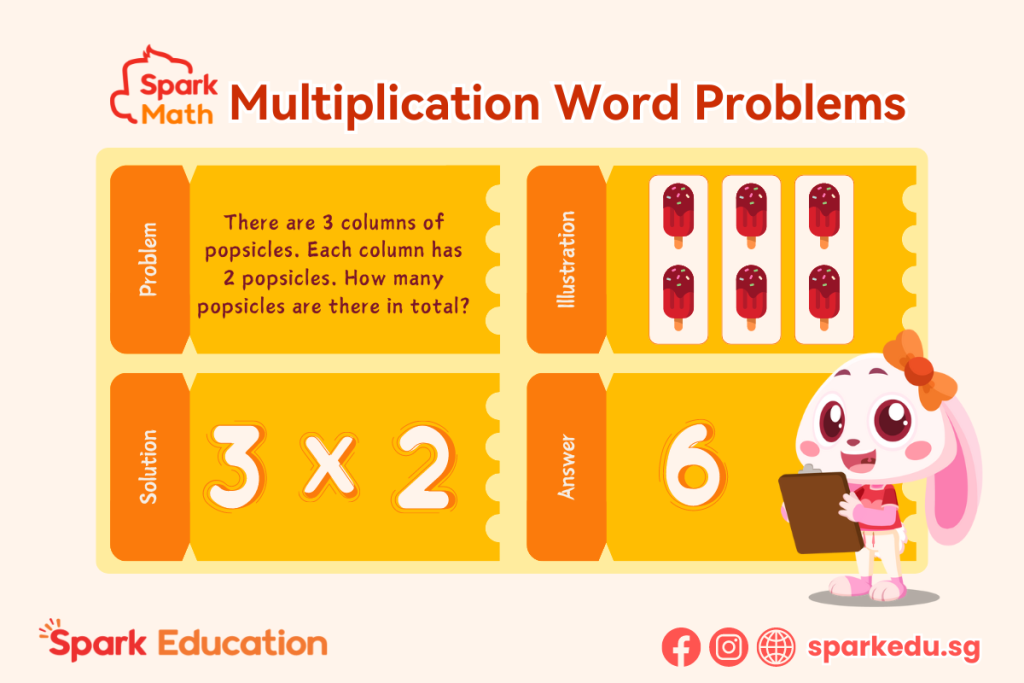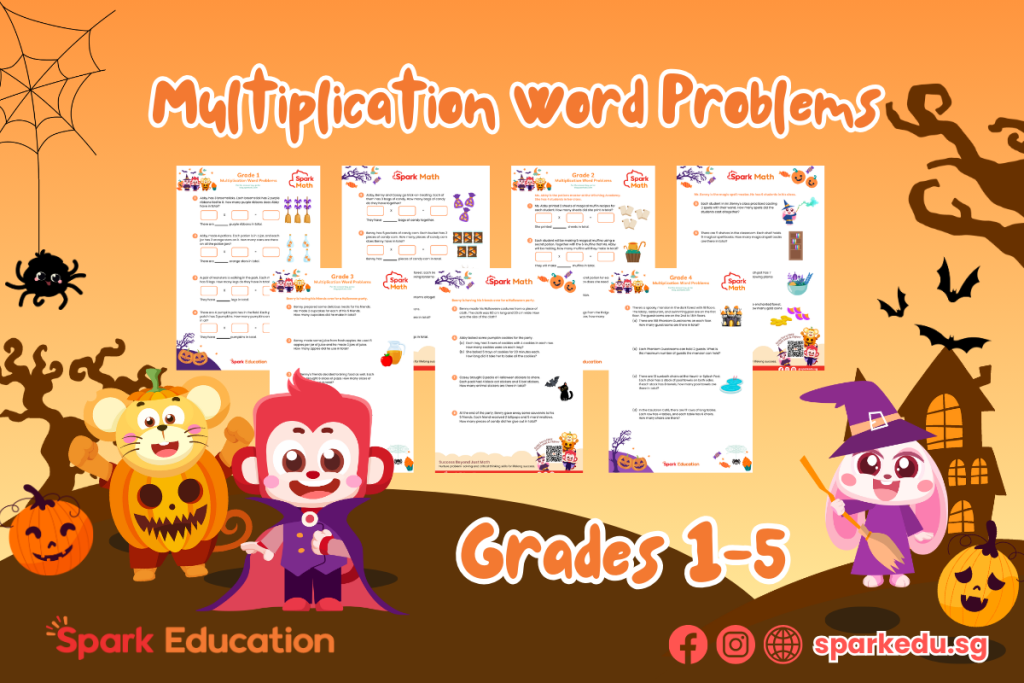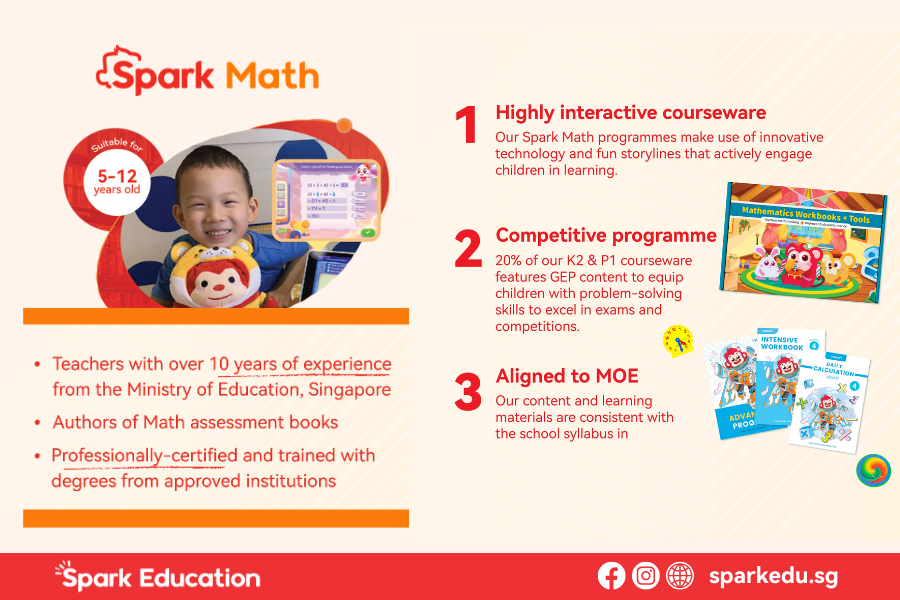
As children move through elementary school, they will become better at recalling their times tables. From 3rd to 5th grade, they will also learn how to solve multiplication word problems. Word problems involving multiplication can be tricky as they often involve multiple steps and finding the correction operation.
By explicitly teaching the different types of multiplication word problems outlined in the Singapore Math Syllabus and Common Core State Standards, we can help students understand these operations in a more relevant way. This not only enhances their math skills but also demonstrates how math applies to everyday life. In this article, you’ll discover five common multiplication word problems that all 3rd to 6th graders should learn to solve.
5 Benefits of Learning Multiplication Word Problems
1. Real-world application
Multiplication word problems help students connect multiplication to real-world scenarios, and gain a deeper understanding of the operation and its practical uses. This help them apply mathematical concepts to everyday situation, enhancing their problem-solving abilities.
2. Critical thinking
Solving word problems requires students to analyze the given information, identify the relevant data, and choose the appropriate multiplication strategy. It promotes logical thinking and deductive reasoning as students break down complex problems into smaller, manageable steps.
3. Mathematical fluency
Word problems reinforce multiplication facts and help students develop automaticity in their recall. They provide opportunities to practice multiplication algorithms and improve computational accuracy.
4. Communication and representation
Word problems help students develop mathematical language and vocabulary, allowing them to express their understanding and reasoning clearly. They can be used to introduce visual representations of multiplication, such as arrays or number lines, which can aid in understanding and problem-solving.
5. Motivation and engagement
When students see how multiplication is used in their daily lives, they are more motivated to learn and engage with the subject matter. Solving word problems can be challenging and rewarding, fostering a sense of accomplishment and increasing students’ confidence in their mathematical abilities.
Read on to understand the common types of multiplication word problems that students may encounter. By understanding these different types of word problems, students can develop strategies to solve them effectively.
5 Common Types of Multiplication Word Problems
1. Equal Groups Problems
Definition: Classic equal groups problems involve a certain number of groups, each containing the same number of items.
Steps for solving:
- Identify the number of groups and the number of items per group.
- Multiply the number of groups by the number of items per group.
Examples:
| Question | Solution |
|---|---|
| There are 4 bags of marbles. Each bag has 7 marbles. How many marbles are there in total? | 4 bags x 7 marbles/bag = 28 marbles |
| A school has 3 levels. Each level has 6 rooms. How many rooms are there in the school? | 3 levels x 6 rooms/level = 18 rooms |
| A bakery makes 3 batches of cookies. Each batch has 8 cookies. How many cookies do they make in total? | 3 batches x 8 cookies/batch = 24 cookies |
2. Arrays Problems
Definition: Rectangular arrays describe items arranged in rows and columns, forming a rectangular shape.
Steps for Solving:
- Identify the number of rows and the number of items per row.
- Multiply the number of rows by the number of items per row.
Rectangular arrays describe items arranged in rows and columns, forming a rectangular shape.
Examples:
| Question | Solution |
|---|---|
| A garden has 3 rows of flowers. Each row has 5 flowers. How many flowers are there in total? | 3 rows x 5 flowers/row = 15 flowers |
| A parking lot has 6 rows of cars. Each row has 4 cars. How many cars are there in total? | 6 rows x 4 cars/row = 24 cars |
| A classroom has 7 rows of chairs. Each row has 8 chairs. How many chairs are there in total? | 7 rows x 8 chairs/row = 56 chairs |
3. Area Problems
Definition: Area problems involve finding the area of a square or rectangle, which is the product of its length and width.
Steps for Solving:
- Identify the length and width (a.k.a. breadth) of the rectangle.
- Multiply the length by the width to find the area.
Examples:
| Question | Solution |
|---|---|
| A room is 10 feet long and 8 feet wide. What is its area? | 10 ft x 8 ft = 80 ft² |
| A garden is 6 meters long and 4 meters wide. What is its area? | 6 m x 4 m = 24 m² |
| A poster is 12 inches long and 9 inches wide. What is its area? | 12 in x 9 in = 108 in² |
4. Comparing Problems
Definition: Comparing-type multiplication word problems involve comparing two quantities using multiplication. These problems often use keywords like “times as many,” “twice as much,” or “half as many” to indicate a comparison.
Steps for Solving:
- Identify the conversion factor between the two units of measurement.
- Multiply the given quantity by the conversion factor.
Examples:
| Question | Solution |
|---|---|
| Benny has 3 times as many marbles as Abby. If Abby has 8 marbles, how many marbles does Benny have? | 3 x 8 = 24 marbles |
| A book has 200 pages. If you read 3 times as many pages today as you did yesterday, and you read 25 pages yesterday, how many pages did you read today? | 25 pages x 3 = 75 pages |
| The blue team scored twice as many points as the red team. If the red team scored 10 points, how many points did the blue team score? | 10 points x 2 = 20 points |
5. Combination Problems
Definition: Combination problems involve finding the total number of combinations of two or more sets of items.
Steps for Solving:
- Identify the different sets of items being combined.
- Multiply the number of items in each set to find the total number of combinations.
Examples:
| Question | Solution |
|---|---|
| A restaurant offers 3 types of sandwiches and 2 types of drinks. How many different meal combinations are possible? | 3 sandwiches x 2 drinks = 6 meal combinations |
| A store sells 4 colors of shirts and 3 styles of pants. How many different outfits can be made? | 4 shirts x 3 pants = 12 outfits |
| A school offers 5 sports and 3 clubs. How many different combinations of sports and clubs can a student choose? | 5 sports x 3 clubs = 15 combinations |
These are just a few examples of the types of multiplication word problems that elementary students might encounter. By understanding these different categories, students can develop strategies for solving a variety of word problems and apply their multiplication skills to real-world situations.
Tips for Solving Multiplication Word Problems
Multiplication word problems can be tricky, but with the right strategies, they can become much easier to solve. Here are some helpful tips:
- Read Carefully
Understand the problem and identify the key information. A clear understanding of the problem will guide you towards the correct solution. - Identify Keywords
Keep an eye out for keywords that signal multiplication. Words like “of,” “times,” “product,” “multiply,” “groups,” “rows,” and “columns” are common indicators. Spotting these keywords will help you determine the appropriate operation to use. - Draw a Diagram
Sometimes, a picture is worth a thousand words. Try drawing a diagram or picture to represent the problem. This can make it easier to understand the relationships between the different quantities and choose the correct operation. - Write an Equation
Once you’ve identified the key information and the operation needed, write a multiplication equation to represent the problem. This will help you organize your thoughts and make it easier to solve the problem. - Check Your Answer
After you’ve solved the problem, take a moment to check your answer. Does it make sense in the context of the problem? Can you estimate the answer to see if it’s reasonable? By checking your answer, you can ensure that you’ve arrived at the correct solution.
By practicing multiplication word problems, primary students can develop their problem-solving skills and apply mathematical concepts to real-world situations.
Free Multiplication Word Problem Worksheets

Check out these great Free Math Worksheets on Multiplication Word Problems!
- Grade 1 Multiplication Word Problem Worksheet & Solutions
- Grade 2 Multiplication Word Problem Worksheet & Solutions
- Grade 3 Multiplication Word Problem Worksheet & Solutions
- Grade 4 Multiplication Word Problem Worksheet & Solutions
- Grade 5 Multiplication Word Problem Worksheet & Solutions
Related articles: New MOE Math Primary Syllabus (P1-3), New MOE Math Primary Syllabus (P4-6)
Is Your Child Ready for More than Just Worksheets?
Worksheets are great for practicing math, but sometimes kids need more to really understand numbers. That’s where Spark Math comes in!

Spark Math by Spark Education is a fun and engaging online math program designed to help Pre-K2 to Grade 6 students develop a strong foundation in mathematics. With a small-group digital classroom, interactive activities, and a focus on real-world applications, Spark Math makes learning math enjoyable and effective. Aligned with Singapore Math and US Common Core Standards, our curriculum ensures that students are well-prepared for future academic challenges. Discover the Spark Math difference with a free trial class today!




